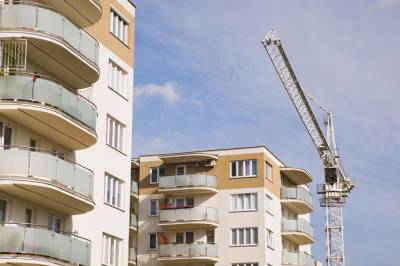Multifamily Blogs
Economic Growth has Buoyed Multifamily Industry—and Vice Versa
Economic Growth has Buoyed Multifamily Industry—and Vice Versa
 It is no secret that the multifamily industry has flourished over the past few years. Adjectives such as hot, booming, sizzling and thriving are commonly used to describe the market.
It is no secret that the multifamily industry has flourished over the past few years. Adjectives such as hot, booming, sizzling and thriving are commonly used to describe the market.
But what exactly substantiates a hot market? Is it a decent rise from previous years or something of a more profound climb?
The numbers will astound you.
Recent economic research by the National Multifamily Housing Council and National Apartment Association indicates apartment residents contributed a whopping $1.3 trillion to the economy in 2013. That figure includes dollars and jobs created from apartment construction, operation and resident spending.
To give some context to the $1.3 trillion figure and the generally prosperous nature of the market, the study points to the recession-constricted 2009 fiscal year. The 97,000 nationwide apartment construction starts in ’09 represented the lowest in 45 years. By 2013, construction starts ballooned to 294,000, which pumped $30 billion into the economy.
Of note, 2013 is the latest full calendar year in which the study was done, but the results remain significant considering 2014 and the first two-plus quarters of 2015 have been even more promising than 2013.
Clearly, the economic growth as a whole is largely responsible for the apartment boom. The study isn’t to imply that the multifamily industry is burgeoning while other industries flounder or remain still.
The point to be reiterated to owner/operators is that this is a prime, peaking time for the industry. Owner/operators would be wise to continue to distinguish themselves on listings and through extensive marketing efforts to keep their brands front and center and to add to the industry’s momentum. It’s a simple concept, but the more apartment companies market their communities via various channels, the higher the likelihood people will choose to rent rather than buy.
The study, available on WeAreApartments.org, breaks down the data by state and key metro areas. It notes that 37 million apartment residents span 19.7 million homes across the country and support 12.3 million jobs.
The study also reveals that the New York metro area apartment industry pumped $111.5 billion of revenue into the local economy, and that Los Angeles’ $2.3 billion of construction spending ranked highest in the nation.
The operation of multifamily housing alone supported 1.5 million jobs, contributing almost $191 billion to the economy.
As the economy booms, so too does the multifamily industry. Some will sit back and ride the wave while others will continue to remain aggressive. Those who remain aggressive in marketing their apartment communities will reap the greatest rewards and better sustain results through the next downturn in the cycle.
There are a number of recent examples of how continuing to market has worked for companies in other industries. One prominent example on the national level is Apple’s efforts with the iPhone 6s. With the popularity of the previous models, the product is one that practically sells itself as consumers want to be the first to get their hands on one.
Apple ramped up its advertising, even using comedian Bill Hader and pop singer Selena Gomez in recent ads after not typically using celebrities. The result was record sales of 13 million phones in the first three days of its U.S. launch in late Sept. Even though the phones are on back order, Apple continues to market heavily to generate even greater demand.
But the positive impact of scarcity on demand isn’t new. It’s a heavily researched and documented phenomenon. Scarcity has a psychological effect on consumers, making them want something even more if it’s not available. It creates a fear of shortage and a sense of urgency.
A 2013 study titled “Decision-contextual and individual influences on scarcity effects” that was published in European Journal of Marketing tested whether the intent to purchase went up or down when a utilitarian (must have) or hedonic (luxury) product was perceived to be scarce due to high demand or supply constraints. The results showed that intent to purchase skyrocketed for utilitarian products, which was sunscreen in the test, when supplies were limited due to high demand. It also skyrocketed for hedonic products, which was chocolate in the test, when scarce because of supply constraints. In other words, whether you’re selling luxury Class A apartments or Class B and C apartments, demand increases when the prospective renter perceives that the apartments are in low supply or unavailable.
By continuing to market your community, even if you’re 100 percent occupied, you create more demand and activate the desire to check on availability regularly to avoid losing the opportunity to lease the apartment home.

